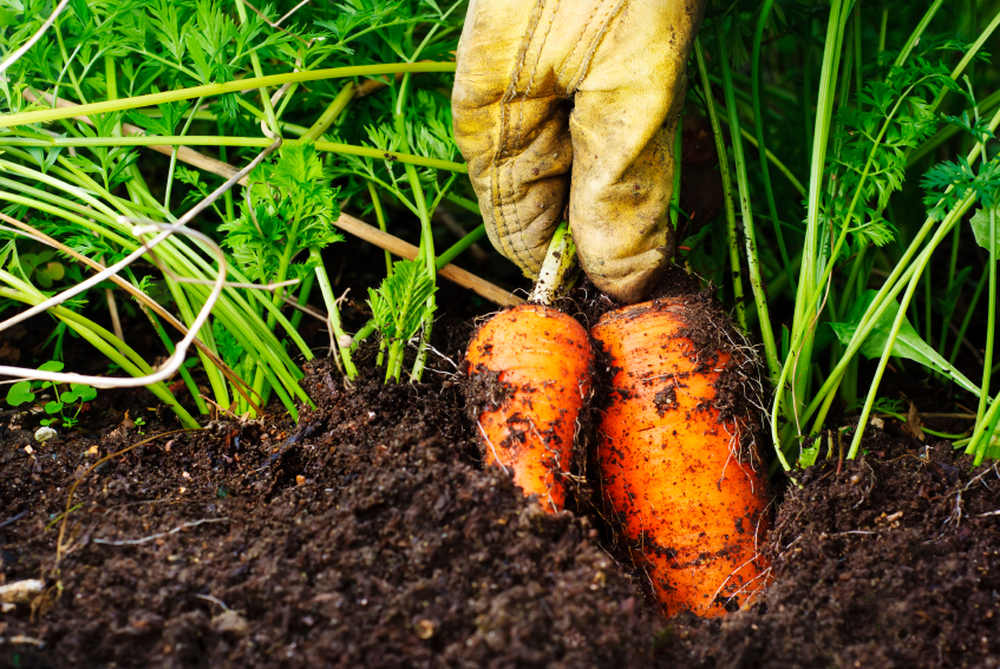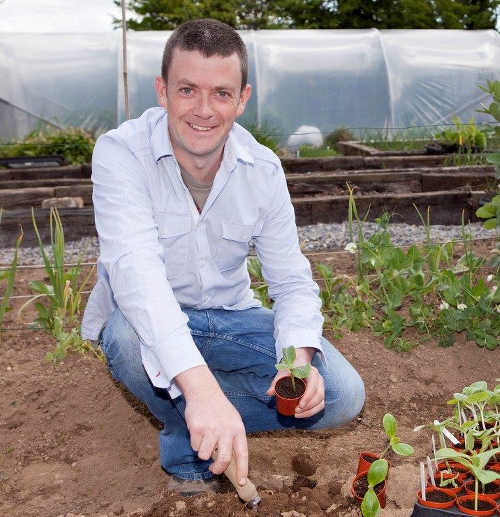Grow It Yourself - June
 Michael Kelly
Michael Kelly
It’s hard to believe that we’re now in the sixth month of the year already, and that the longest day of the year is a mere three weeks away. At the risk of getting a slap in the head, let me say this much: it will be Christmas before we know it!
After a couple of stalwart days in the veg patch in fine weather, I am feeling uncharacteristically chipper and on top of things and perhaps even a little smug – yes, I know there’s danger in that.
In early June I sow my carrots and parsnips outside, and also my final sowing of peas. There is a sense of completion, if not finality, in the air. Of course there is still lots of sowing to do (right up until August or September), but that’s the last of what I consider my “big 7” direct-sow sowings – garlic, potatoes, broad beans, peas, onions, carrots and parsnips.
Carrots and parsnips are sown in almost identical fashion. While I practice ‘no-dig’ growing pretty much everywhere in the garden, I make an exception for the root bed, which I turn over with a spade and then rake to a fine tilth. This is hard work but essential if you want nice long roots.
Both these vegetables are great for storing so they are worth the effort. I then make shallow drills in the bed using a ridging hoe and tidy the drills up by hand – with small little seeds you need to make sure the surface of the drill is good and flat so the seeds won’t disappear down in between clumps of soil.
I get 4 rows of carrots in each bed (20cm apart), but only 3 with parsnips (30cm apart). I then sow the seeds in the drills. With carrots, sprinkle them as thinly as you can along the row. With parsnips it’s more precise – laying a seed in the drill every 7cm.
In both cases we will be thinning them out later when they’ve got established (carrots to 4cm, parsnips to 15cm). The reason we sow extra seeds is to allow for some not germinating.
Then simply rake the soil carefully back over the drills and water well. I sowed 3 meters of each so should expect roughly 300 carrots and 60 parsnips.
Give Peas a Chance at Work
With our friends in Cully & Sully, we’re looking for 500 workplaces to take part in our ‘al desko’ food growing challenge by growing peas on their desk at work. Sign up today for a free Give Peas a Chance growing kit for you and up to 5 colleagues. Each week we will be picking our favourite growers to win cool GIY prizes and the top prize is worth €5,000 including a €3,000 garden which you can donate to your local community. Sign up at www.cullyandsully.com/ourgarden.
 Things to do this Month - June
Things to do this Month - June
To-Do
Watering and weeding duties step up a notch – the tunnel/greenhouse in particular will require a good deal of water from now on. Watch the weather and water outside as required. Continue to earth-up potato plants to prevent the spuds becoming green. Mulch and water tomato plants and continue to remove side shoots that appear in the leaf axils. Stake everything that grows tall – raspberries, peas, beans, tomatoes etc. Net soft fruit against birds – it’s worth the effort.
Sow
Sow courgettes, pumpkins, summer and winter squash, fennel, chicory. Succession sow: beans (French and Runner), kale, pea, spinach, spinach beet, summer broccoli, carrot, swede, leek, lettuce, Brussels sprouts, beetroot, chicory, endive, turnip, kohlrabi, fennel. Plant out leeks, Brussels Sprouts, cabbage, autumn cauliflower, calabrese, sprouting broccoli, celery, celeriac, cucumbers, pumpkin, marrows, runner beans, aubergine.
Harvest
We are now really starting to see some payback from our GIYing - the first broad beans and peas as well as new potatoes, new carrots, soft fruit like gooseberries, cherries and strawberries. Herbs are in full flow. Also harvest kohlrabi, cabbage, cauliflower (month end), spinach, spring onion, shallots, salad leaves, elderflower, rhubarb, salad leaves, onions, carrots, beetroot, garlic, sea-kale.
Recipe of the Month – Gooseberry and Strawberry Tart
I planted six new gooseberry bushes earlier this year and we’ve had our first gooseberries this month – it’s cause for celebration and a good tart.. The sweetness of the strawberries in this Hugh Fearnley Whittingsstall tart goes brilliantly with gooseberries. It’s also a sinch to make.
Serves four.
Ingredients
• 200g gooseberries, topped and tailed
• 200g strawberries, hulled and halved or quartered
• 75g caster sugar, plus a little extra to finish
• Finely grated zest of 1 lemon
• 3 tbsp ground almonds
• 1 egg white, lightly beaten
For the sweet shortcrust pastry
• 200g plain flour
• 1 heaped tbsp icing sugar
• Pinch of salt
• 120g cold, unsalted butter, cut into cubes
• 1 egg yolk
• About 50ml cold milk (or water)
For the pastry, put the flour, sugar and salt in a food processor, blitz briefly to combine, then add the butter and blitz until it resembles breadcrumbs. Add the egg yolk (save the white) and enough milk or water to bring it together into large clumps.
Tip on to a lightly floured surface and knead lightly into a ball. Wrap in clingfilm and chill for 30 minutes.
Combine the berries, sugar and lemon zest, and set aside to macerate for 30 minutes. Heat the oven to 200C/400F/gas mark 6.
Line a large baking tray with baking parchment or nonstick liner – use a tray with a slight edge, as the tart may leak juice while baking.
On a floured surface, roll out the pastry to a rough circle, 2-3mm thick and about 35cm in diameter, and transfer to the baking tray. Sprinkle the ground almonds evenly over the top without going right to the edges.
Spoon the macerated fruit, and any juices, over the pastry, leaving a 3-4cm border. Fold the border inwards over the fruit, brush the pastry edges with the egg white and sprinkle with more caster sugar.
Bake for 30 minutes, or until the pastry is a deep gold. Serve warm, with cream or ice-cream.
Tip of the Month – Busy times
Before we head in to July, it’s not too late to get a decent sowing of the following done for June: Purple Sprouting Broccoli is sown now, grows through the autumn/winter and starts to produce food in the spring, when it’s badly needed. It’s really worth trying to get 3-4 healthy plants started now.
It’s still not too late to produce more food for this year too – you can still sow florence fennel, kohlrabi, cauliflower, winter cabbage, scallions, kale, perpetual spinach and chard. Also keep on top of your monthly succession sowing of salad leaves – perhaps one small module tray each of lettuce, oriental greens, annual spinach and coriander
 About GIY
About GIY
GIY is a not-for-profit organisation that aims to create a healthier, more sustainable world where people grow their own food. We inspire and support people to grow food more successfully by bringing them together to share advice, tips and ideas. There are approximately 50,000 people involved in the GIY movement in Ireland, which is proudly supported by Woodies DIY.
For more information check out www.giyireland.com
Michael Kelly is a freelance journalist, author and founder of GIY Ireland.
© GIY Ireland 2015 – all rights reserved.





There are currently no comments
Leave a comment
Not a member? Register for your free membership now!
Or leave a comment by logging in with: